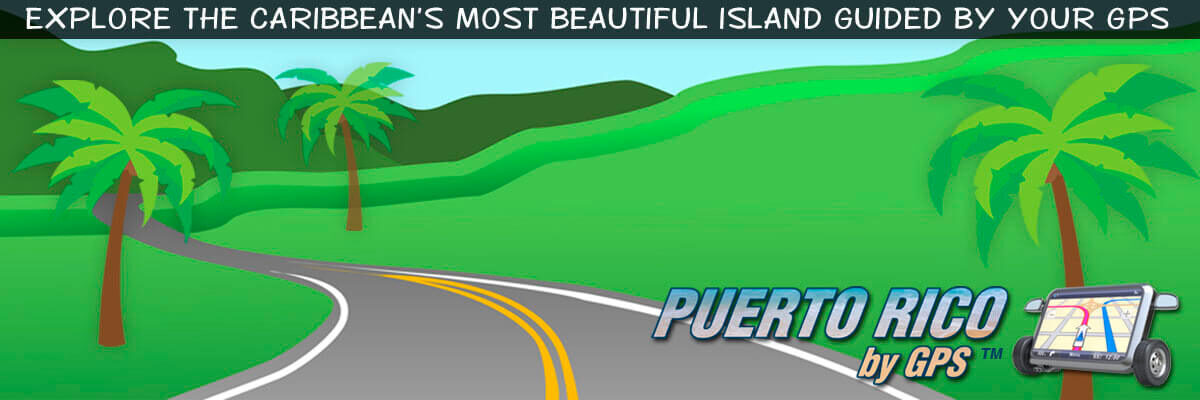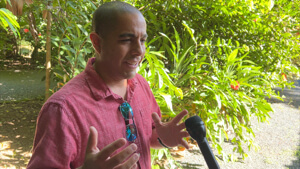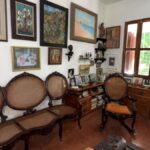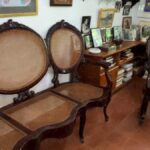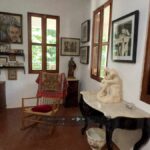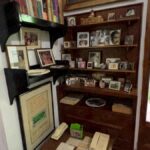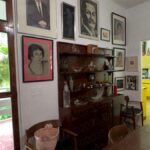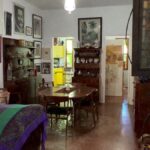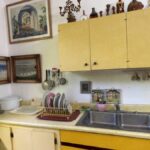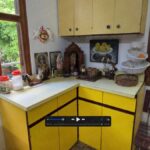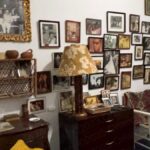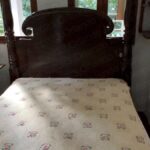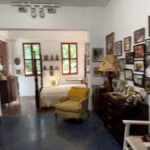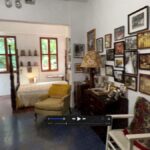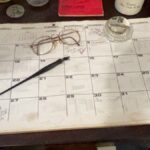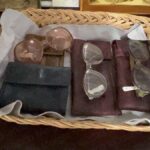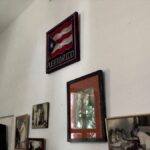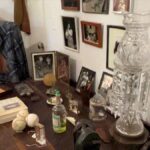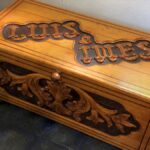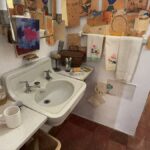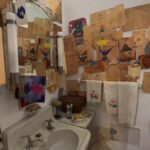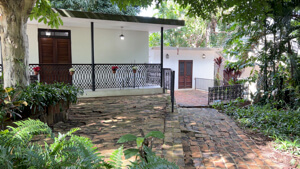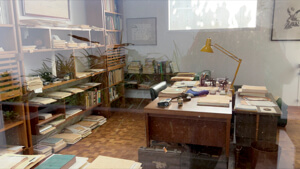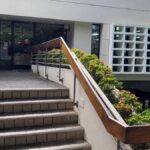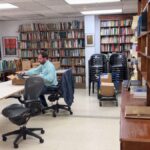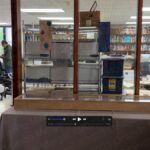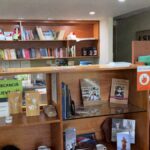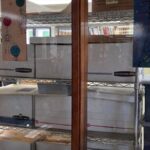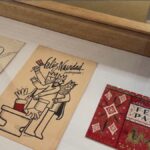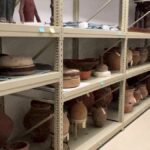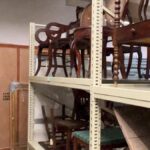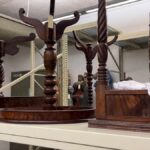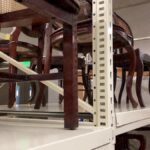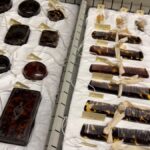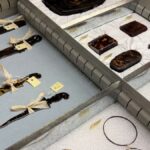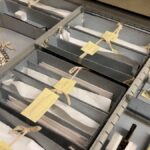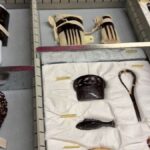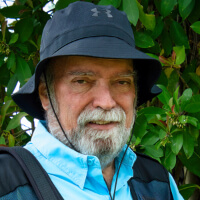In Puerto Rico we have a saying: “Los pueblos que no conocen su historia están condenados a repetirla” (People who don’t know their history are doomed to repeat it). However, it’s not a local phrase. It was first coined by the Spanish poet George Santayana at the dawn of the 20th Century. However, that’s one of the first questions that you ask yourself (or at least I did) when you visit the Luis Muñoz Marín Foundation: How could a people that accomplished so much get to where they are today; bankrupt in almost every sense of the word?
And of course I’m talking about the Puerto Rican people. When visiting the Luis Muñoz Marín Foundation you’ll probably see societal rot and urban decay along your way. You’ll also fall into a couple of potholes (if you’re lucky). This is the same island that was once called “the shining star of the Caribbean”. Except that it’s not shiny anymore, in spite of my best efforts to show you the bright side on Puerto Rico By GPS.
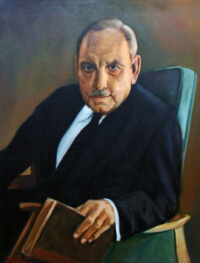
Luis Muñoz Marín
So how did we get to where we are? The truth is that I won’t answer that question because I’d have to write an entire book instead of just this blog post. But what I will do is tell you how we got to where we were. That was thanks to a man called José Luis Alberto Muñoz Marín and to the excellent team of professionals that surrounded him. You’ve probably heard of him simply as Luis Muñoz Marín. And if you got here on a plane, you probably landed at his airport, or more properly at the airport that carries his name..
My wife Zory and I are on a mission to visit every township in Puerto Rico. After visiting 22 U.S. National Parks in the past five years, and driving over 18,000 miles, we thought it was time to enjoy our own island for a change.
Our first stop was at Carolina, where we produced one video, one blog post and two articles. Then we set our sights on Trujillo Alto. Trujillo Alto is a smaller town that’s presently going through the turmoil of having its mayor convicted and jailed for corruption. So we decided not to contact the city officials and simply visit the town like any other tourist would. Even so we produced an excellent video (if I do say so myself) and visited the Luis Muñoz Marín Foundation.
The Luis Muñoz Marín Foundation is one of those amazing places that you’ve lived by for years, driven by a hundred times, and never visited. At least that was my case, since I live about ten minutes away and I’ve been in Puerto Rico since 1963.
When we got there we met with Ricardo Zeno, an excellent interpreter who dedicated half of his day to giving us the royal treatment. That’s when I learned the difference between a guide and an interpreter. A guide is someone that shows you something. An interpreter is someone who knows a matter inside out and tailors your experience to your knowledge level. So my learning started the minute I set foot in the Luis Muñoz Marín Foundation.
The Luis Muñoz Marín Foundation sits on a 17 ½ acre plot of land on the outskirts of the municipality of San Juan. So much so that most Puerto Ricans think that it’s in Trujillo Alto. I was one of those people. So that was the second thing that I learned upon meeting our interpreter.
Ricardo is a friendly individual that made our visit delightful. He was also quite knowledgeable and was able to answer even our most challenging questions.
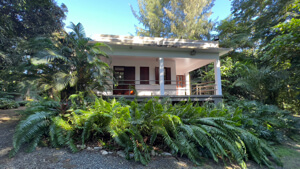
This is where it all started and this is where Luis and Inés returned. This was the Luis Muñoz Marín residence. (click on image to see it larger.
Our tour started right in front of the small house that Luis Muñoz Marín and his second wife Inés Mendoza called home. It’s a small three-bedroom concrete structure that had already been built back in 1938 when the Marins fell in love with it.
But let’s not get ahead of ourselves. Who was Muñoz Marín?
José Luis Alberto Muñoz Marín was born on Calle Fortaleza in Old San Juan. He was the son of Luis Muñoz Rivera, a Puerto Rican poet, journalist and politician who was the Island’s resident commissioner during the governorship of Regis Henri Post.
Like his father, Luis Muñoz Marín was also a poet, journalists and politician. But that’s where the similarities ended. While Muñoz Rivera favored autonomy for the Island since Spanish colonial times, Muñoz Marín started as a socialist and favored full independence (at least during his early years).
We was also a bohemian and frequented intellectual circles of all types. This would have a direct bearing on his government later on, as he surrounded himself with thinkers and not just politicians (in the modern sense of the word).
At a very young age Muñoz Marín became the editor of La Democracia, a newspaper founded by his father on July 1, 1890, in the town of Ponce, Puerto Rico. La Democracia’s editorial line crusaded for Puerto Rican self government. He also published a newspaper in Washington that covered Puerto Rican news for the “Washingtonians” and Washington news for the Puerto Ricans. He also acted as a pseudo-secretary for his father. All this before the age of 18.
On November 15, 1916 Luis Muñoz Rivera died at the young age of 57 and Luis Muñoz Marín was thrusted into two important roles. First, Jesús T. Piñero (remember him from Carolina?) became Resident Commissioner, during the governorship of Rexford Tugwell and asked Luis Muñoz Marín to perform the same work that he had been doing for his late father. And second, he was left entirely in charge of “La Democracia”.
However, Jesús T. Piñero’s stint as Resident Commissioner was short lived, as in 1946 he was named governor of Puerto Rico by President Harry S. Truman, becoming the first Puerto Rican to occupy that post under U.S. administration. But not all was peaches and cream during the Piñero administration.
On May 21, 1948, a bill was introduced before the Puerto Rican Senate which would restrain the rights of the independence and Nationalist movements on the archipelago, and a young Luis Muñoz Marín —who was president of the Puerto Rican Senate at the time— approved it. That bill came to be known as “la mordaza”. So much for the “First Amendment” and Muñoz’s affiliation to the independence movement.
In 1947 the U.S. Congress enacted legislation allowing Puerto Ricans to elect their own governor and a year later, in 1948, Luis Muñoz Marín won the general election by a landslide running as an independent under the Popular Democratic Party insignia. He was the first Puerto Rican to be elected governor of the Island.
So what was Luis Muñoz Marín’s magic? How did he manage to preside the Puerto Rican senate for 8 years, be governor for 16 and then return to the senate for an additional 4 years? That question has many answers, but maybe the most important one is that it never went to his head.
Remember that small three-bedroom concrete structure that I was telling you about a few paragraphs back? Well, he bought it before becoming governor of the Island and that’s where he returned after he was done. He could have had it all and yet decided to be an honest public servant. Those are three words that we seldom hear in a row these days.
So how did he do it? Back then Steve Jobs hadn’t even been born, yet Muñoz did exactly what Steve would’ve suggested: “he surrounded himself with the best people and he let them do their thing”. Of course, Luis Muñoz Marín wouldn’t have put it quite that way, but hey, I’m the writer here so “give me a break”.
Who where those people? Guys like Roberto Sánchez Vilella (engineer), José Trias Monge (lawyer and judge), Mariano Villaronga (educator), Sol Luis Descartes (Cornell graduate), Ricardo Alegría (scholar, cultural anthropologist and archaeologist), Santiago Polanco Abreu (lawyer and politician) Teodoro Moscoso (businessman, diplomatic corps, politician) and many others. And to put “the cherry” on it all Puerto Rico’s publicist at the time was none other than the famous David Ogilvy; the father of modern advertising.
It was an eclectic mix of technocrats, humanists and deep thinkers that came up with ideas like “operation bootstrap” and “operation serenity” (operación serenidad). At first glance these seemed like opposing ideas but in hindsight they were just what the Island needed. The former was a multi-prong plan to industrialize the Island and the later made sure that Puerto Ricans wouldn’t lose their humanity along the way.
Operation Serenity include projects like the “Institute of Puerto Rican Culture”, the “Casals Festival”, the “Puerto Rico Symphony Orchestra”, the “Puerto Rico Conservatory of Music” and the “Puerto Rican Division of Community Education” that included: rolling libraries, rolling museums, traveling theater, plastic arts and a massive literacy campaign.
Luis and Inés weren’t “palace kind of people”. Those are not my words, they were actually uttered more than once by doña Inés. They preferred the peace and quiet of their small home in Trujillo (or in San Juan?).
Well let’s settle that. The property was originally in Trujillo Alto, but it ended up in Río Piedras (a town that no loner exists) when the city maps were redrawn. Then on June 4, 1951, the town of Río Piedras was annexed to San Juan and that’s how the Luis Muñoz Marín property ended up in San Juan.
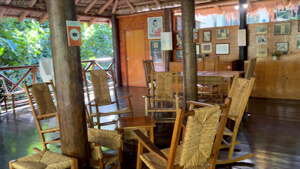
This is where “the sausage” was made, from rocking chairs under a tropical tree canopy. Click on image to see it larger.
So back to the “palace” thing. Many of Puerto Rico’s most important decisions during the 1950’s and 60’s weren’t made at La Fortaleza. They were made from rocking chairs in a small tree-covered terrace called “el rancho”, right next to the Marín home. That’s where the Marin’s felt at home and that’s where they did their best thinking.
After 16 years in power Luis Muñoz Marín and his team transformed Puerto Rico from “the poor house” of the Caribbean into a shining example of progress and prosperity for all Latin America.
Right next to “el rancho” is the original Muñoz Marín house exactly as Inés María Mendoza left it on the day that she died. It’s like stepping back in time and getting a “fly-on-the-wall” look at life in the Muñoz Marín household. The foundation has spared no expense in preserving the property “frozen in time”. Everything is catalogued, numbered and kept in a climate controlled environment 24/7.
I must point out that the regular tour of the Luis Muñoz Marín foundation doesn’t include a visit to the interior of his home. Visitors walk around the property, look through the windows and receive ample information from knowledgeable bilingual interpreters. We were privileged to enter the home, see it in its entirety and photograph it to our heart’s content.
- There were pictures and religious objects everywhere.
- The furniture was a gift from Pepín Bosch, President of Bacardí in Cuba.
- Rocking chairs were popular at the Marín residence.
- More pictures
- Even more pictures
- A simple dining area.
- Just another Puerto Rican kitchen.
- Check out the “Tang” canisters. I still have two of those.
- Even more pictures
- Doña Ines’bed.
- Doña Ines’ room.
- Pictures galore.
- Donna Ines’ agenda.
- Doña Ines’ eyeglasses
- Puerto Rico was ever present.
- A small desk at Don Luis’ room.
- Yes, he liked baseball.
- They loved each other to the last day.
- A simple bathroom.
- Check out the drawings by daughters, grandchildren and great grandchildren.
Take a close look at the pictures and you’ll see how “down to earth” this family was. There are hundreds of family pictures throughout the house, dozens of drawings on the bathroom walls that were made by Inés María’s daughters, grandchildren and great grandchildren, her glasses, her scale (because she weighed herself daily), Luis’ wedge pillow (because he suffered from gastric reflux), dozens of commendations, signed baseballs (because he also loved sports) and a yellow formica kitchen with plain walls and a terrazo tile floor.
There’s nothing outstanding about this house, except that it belonged to one of the greatest Puerto Rican families in history. Oh, and the fact that Inés and Luis actually got married on the porch and most of the initial meetings of Puerto Rico’s Popular Democratic Party were also held there.
A few feet across the way are two white structures that where originally intended to be the Luis Muñoz Marín Library, sort of an idea copied from the United States. Well, Luis Muñoz Marín didn’t like the idea. He considered it presumptuous and a waste of the people’s money. However, since he became a senator again after leaving the governorship, he acceded to the idea when it was repackaged as something related to his new position.
The way he saw it the new facilities allowed him to work part of the time at the Capitol building and the rest next to his home. So I guess you could say that Luis Muñoz Marín was one of the first —if not the first— on the Island to have a “home office”.
A few steps later we arrived at the “Historical Archive” where historians, writers, university students and anyone looking for hard to find information about Puerto Rico in the 20th Century can go for help.
Over 50 collections, with thousands of documents per collection, are kept in climate controlled conditions, organized, cataloged and in many cases digitized for posterity. There are also two large libraries, a large collection of serigraph postcards and a book store.
- Historical Archive
- One of the libraries
- The other library.
- Book Store
- Projects underway.
- Serigraph Christmas card collection.
And then there’s the Teodoro Vidal Collection.
Teodoro Vidal was quite a character. He was an economist by trade when he decided to enlist in the U.S. Army. When he came back he landed a job working directly with Teodoro Moscoso, the man responsible for the Operation Bootstrap miracle. At the time Muñoz Marín was starting Operation Serenity and Vidal became a collector of Puerto Rican artefacts.
Along came the 70’s, Muñoz Marín was already out of office, and Vidal decided to start a non-profit foundation to establish Puerto Rico’s first National Museum (something that the Island still doesn’t have to date).
Then the 90’s came and Vidal realized that he was still fighting an uphill battle. So he decided to donate his entire collection to the Smithsonian Museum, in the hope that continental Puerto Ricans would be more appreciative.
However, he made one mistake. He continued collecting stuff. So much so that his second collection grew to thousands of items going back four centuries. A short time before his death he decided to donate his new collection to the Luis Muñoz Marín Foundation. Management at the Foundation agreed without really thinking it through. They built a structure in the style of the Smithsonian, with an exhibit area at ground level and a climate-controlled deposit below. Then they ran out of money.
- Pottery
- Antique furniture
- More antique furniturre
- Even more antique furniture.
- Hair accessories in tortoiseshell. (presently ilegal)
- Letter openers in tortoiseshell. (presently ilegal)
- Spanish fans.
- Hair accessories in tortoiseshell. (presently ilegal)
You see, running and maintaining a facility for something as extensive as the Vidal Collection takes lots and lots of money, and funds for the Luis Muñoz Marín Foundation have been drying up during recent administrations. Now the collection sits in the climate controlled deposit below and the top floor is rented out for events. All this while they try to secure the funds to complete the project.
This is an area that’s beyond limits for most visitors, but once again we were granted a brief visit and the chance to take pictures and shoot video. What you see above is only a sample of this immense collection.
So why did I start this post with the George Santayana’s quote: “People who don’t know their history are doomed to repeat it”? Because after taking this tour most visitors can’t understand how a people that made so much progress during the 50’s, 60’s and 70’s can be in such financial and social straits these days. And just so you know, I could explain it to you, but it would take another post even longer than this one (maybe even a book).
From here our next stop was the Doña Inés Park, an 11½ acre oasis in the blistering Puerto Rican sun that was acquired after her death. I will cover the park in a separate post, since this one is getting kind’a long already
However, there is one last thing that I would like to make absolutely clear. The Luis Muñoz Marín Foundation is not one of those places where you just show up, pay your admittance fee and walk right in. You have to make a reservation.
There are trained interpreters that tailor each tour to your specific party. And yes, there are tours in Spanish or English. For more information call 787–755-7979.
Finally, if you liked this article, and you plan to visit Puerto Rico —and the Luis Muñoz Marín Foundation— in the near future, you’ll find ample information on this website. You can also book flights, hotels & car rentals at great prices through the widgets on the right hand column .
And yes, they are affiliate links. That means that I make a small commission while you pay exactly the same that you’d pay anywhere else. That way you get to return the favor without spending an extra dime.
See you next time,
©2023,Orlando Mergal, MA
____________________
Bilingual Content Creator, Blogger, Podcaster,
Author, Photographer and New Media Expert
Tel. 787–750-0000, Mobile 787–306-1590
